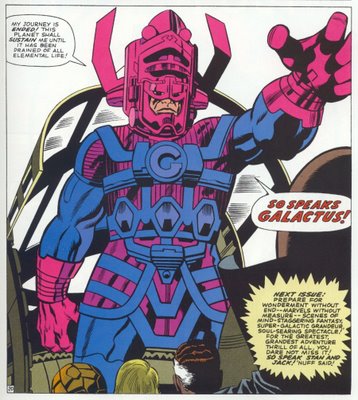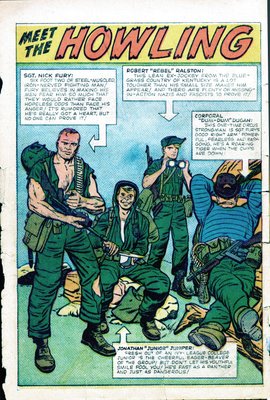ASM #50 begins another cycle of the Spiderman saga. As in ASM#17-18, Spidey is in a fight when Aunt May takes ill. Once again, Peter decides to discard his uniform. Once again, the gangs start operating the minute it becomes obvious the friendly neighborhood Spiderman is out of business.
But the issue does bring one big new aspect to Spiderman: the Kingpin makes his first appearance. One of the most enduring villains in the Spiderman and Daredevil rogues gallery, he decides to take over the mob in New York City.
But when Peter sees a guard about to be killed by mobsters, he can't hold back, even though he doesn't have his costume. He goes into action, quickly subduing the gang and getting away before he can be seen. Afterwards, he remembers that it was his failure to stop a criminal that resulted in Uncle Ben's death.
Aunt May and Uncle Ben are the hammer and anvil Peter is continually suspended between. If he plays his Spiderman role too long, he's neglecting Aunt May; if he ignores the Spidey aspect too long, he's not living up to his obligation to Uncle Ben. This tension between the two aspects of his character is what makes him so memorable.
Peter is not the only person torn between his past and his future. Frederick Foswell, the ace reporter who had previously been a mob boss (in ASM #10), is apparently tempted to resume a life of crime. He tries to take over the Kingpin's position, but is casually brushed aside. Apparently the Kingpin is smarter, stronger and faster than he looks. He imprisons Foswell and captures J. Jonah Jameson, whose editorials against the crime boss are causing problems.
In ASM #52, Spidey and JJJ are about to be killed, but they survive thanks to Peter's strength and quick thinking. However, this does not impress the newspaper magnate. Spidey and the Kingpin battle, while Foswell tries to save JJJ from the rest of the mob. In the end, Foswell is killed and the Kingpin gets away.
Comments: A superb mini-series, among the best of the Lee-Romita stories. Foswell becomes the first, but by no means the last, long-running character to die in ASM. The other major deaths in ASM to this point had been Uncle Ben, Betty Brant's brother and the Crimemaster, all of whom died in their initial story arc. Foswell on the other hand had been around since ASM #10.
More about →
But the issue does bring one big new aspect to Spiderman: the Kingpin makes his first appearance. One of the most enduring villains in the Spiderman and Daredevil rogues gallery, he decides to take over the mob in New York City.
But when Peter sees a guard about to be killed by mobsters, he can't hold back, even though he doesn't have his costume. He goes into action, quickly subduing the gang and getting away before he can be seen. Afterwards, he remembers that it was his failure to stop a criminal that resulted in Uncle Ben's death.
Aunt May and Uncle Ben are the hammer and anvil Peter is continually suspended between. If he plays his Spiderman role too long, he's neglecting Aunt May; if he ignores the Spidey aspect too long, he's not living up to his obligation to Uncle Ben. This tension between the two aspects of his character is what makes him so memorable.
Peter is not the only person torn between his past and his future. Frederick Foswell, the ace reporter who had previously been a mob boss (in ASM #10), is apparently tempted to resume a life of crime. He tries to take over the Kingpin's position, but is casually brushed aside. Apparently the Kingpin is smarter, stronger and faster than he looks. He imprisons Foswell and captures J. Jonah Jameson, whose editorials against the crime boss are causing problems.
In ASM #52, Spidey and JJJ are about to be killed, but they survive thanks to Peter's strength and quick thinking. However, this does not impress the newspaper magnate. Spidey and the Kingpin battle, while Foswell tries to save JJJ from the rest of the mob. In the end, Foswell is killed and the Kingpin gets away.
Comments: A superb mini-series, among the best of the Lee-Romita stories. Foswell becomes the first, but by no means the last, long-running character to die in ASM. The other major deaths in ASM to this point had been Uncle Ben, Betty Brant's brother and the Crimemaster, all of whom died in their initial story arc. Foswell on the other hand had been around since ASM #10.

















